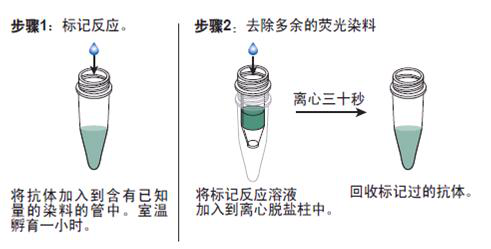
|

| 产地 | 进口、国产 |
| 品牌 | 上海莼试 |
| 保存条件 | Store at -20 °C |
| 货号 | CS9747 |
| 应用范围 | WB=1:100-500 ELISA=1:500-1000 IHC-P=1:100-500 IHC-F=1:100-500 ICC=1:100-500 IF=1:100-500 |
| CAS编号 | |
| 抗体名 | Anti-HSV 1 |
| 克隆性 | |
| 靶点 | 详见说明书 |
| 适应物种 | 详见说明书 |
| 形态 | 详见说明书 |
| 宿主 | 详见说明书 |
| 亚型 | IgG |
| 标识物 | 详见说明书 |
| 浓度 | 1mg/1ml% |
| 免疫原 | KLH conjugated synthetic peptide derived from Herpes simplex virus 1 Neurovirulence factor ICP34.5(101-200aa) |
产品订购信息:
英文名称 Anti-HSV 1
中文名称 神经毒性因子ICP34.5(人单纯Ⅰ型)抗体品牌
别 名 Herpes simplex virus 1; Herpes Simplex Virus; Herpes Simplex Virus Type 1; HSV 1; Human herpesvirus 1; Human herpesvirus type 1;ICP34_HHV1F; Infected cell protein 34.5; Neurovirulence factor ICP34.5; protein gamma(1)34.5.


浓 度 1mg/1ml
规 格 0.1ml/100μg 0.2ml/200μg
抗体来源 Rabbit
克隆类型 polyclonal
交叉反应 Herpes simplex virus 1
产品类型 一抗
研究领域 细胞生物 细菌及
蛋白分子量 predicted molecular weight: 27kDa
性 状 Lyophilized or Liquid
免 疫 原 KLH conjugated synthetic peptide derived from Herpes simplex virus 1 Neurovirulence factor ICP34.5(101-200aa)
亚 型 IgG
纯化方法 affinity purified by Protein A
储 存 液 Preservative: 15mM Sodium Azide, Constituents: 1% BSA, 0.01M PBS, pH 7.4
神经毒性因子ICP34.5(人单纯Ⅰ型)抗体品牌 产品应用 WB=1:100-500 ELISA=1:500-1000 IHC-P=1:100-500 IHC-F=1:100-500 ICC=1:100-500 IF=1:100-500
(石蜡切片需做抗原修复)
not yet tested in other applications.
optimal dilutions/concentrations should be determined by the end user.
保存条件 Store at -20 °C for one year. Avoid repeated freeze/thaw cycles. The lyophilized antibody is stable at room temperature for at least one month and for greater than a year when kept at -20°C. When reconstituted in sterile pH 7.4 0.01M PBS or diluent of antibody the antibody is stable for at least two weeks at 2-4 °C.
Important Note This product as supplied is intended for research use only, not for use in human, therapeutic or diagnostic applications.
产品介绍 Herpes simplex type 1 (HSV-1) belongs to a family that includes HSV-2, Epstein-Barr virus (EBV) and Varicella zoster (chicken pox) virus amongst others. HSV-1 and HSV-2 are extremely difficult to distinguish from each other. Members of this family have a characteristic virion structure. The double stranded DNA genome is contained within an icosahedral capsid embedded in a proteinaceous layer (tegument) and surrounded by a lipid envelope, derived from the nuclear membrane of the last host, which is decorated with virus-specific glycoproteins spikes. These viruses are capable of entering a latent phase where the host shows no visible sign of infection and levels of infectious agent become very low. During the latent phase the viral DNA is integrated into the genome of the host cell.
Function : Contributes to HSV resistance to the antiviral effects of alpha/beta interferon. Recruits the serine/threonine-protein phosphatase PPP1CA/PP1-alpha to dephosphorylate the translation initiation factor eIF-2A, thereby couteracting the host shutoff of protein synthesis involving double-stranded RNA-dependent protein kinase EIF2AK2/PKR. Also down-modulates the host MHC class II proteins cell surface expression. Acts as a neurovirulence factor that has a profound effect on the growth of the virus in central nervous system tissue, probably through its ability to maintain an environment favorable for viral replication.Subunit : Interacts with human PPP1CA to form a high-molecular-weight complex that dephosphorylates eIF2-alpha. Binds to host PCNA, which may release host cells from growth arrest and facilitate viral replication.Subcellular Location : Host cytoplasm. Host nucleus, host nucleolus. Virion (By similarity). Note=At early times in infection, colocalizes with PCNA and replication proteins in cell nuclei, before accumulating in the cytoplasm by 8 to 12 hours post-infection. The effects on the host cell are mediated by de novo-synthesized ICP34.5, the virion-derived population being either non-functional or present in very low amounts (By similarity).Similarity : Belongs to the PPP1R15 family.Database links : UniProtKB/Swiss-Prot: P08353.2

Anti-PSAP/PAP/FITC 荧光素标记酸性磷酸酶抗体IgGMulti-class antibodies规格: 0.2ml
Rabbit Anti-rat IgG Whole serum 兔抗大鼠IgG抗血清Multi-class antibodies规格: 1ml
白介素8抗体 Anti-IL-8rat mouse 0.1ml
Rabbit anti-chicken IgM whole serum 兔抗鸡IgM抗血清 1ml
FZD3 英文名称: 卷曲蛋白3抗体 0.2ml
Rhesus antibody Rh phospho-PRL(Ser163) 磷酸化泌乳素抗体 规格 0.1ml
Rabbit Anti-rat IgG Whole serum 兔抗大鼠IgG抗血清Multi-class antibodies规格: 1ml
HO-1/HSP32 (Hemeo xygenase 1) 血红素氧合酶-1/热休克蛋白-32抗原Multi-class antibodies规格: 0.5mg
Anti-AAT α-1抗胰蛋白酶抗体Multi-class antibodies规格: 0.1ml
Rhesus antibody Rh phospho-c-Jun(Thr91) 磷酸化原癌基因c-Jun抗体 规格 0.1ml
兔抗IgG血清 0.5ml 国产
WFS1 英文名称: Wolfram综合征蛋白1抗体 0.2ml
DRD5 英文名称: 多巴胺受体D5抗体 0.1ml
Anti-AAT α-1抗胰蛋白酶抗体Multi-class antibodies规格: 0.1ml
Phospho-SHP2 (Tyr542) 英文名称: 磷酸化蛋白酪酸磷酸酶2抗体 0.1ml
Ephexin-1 英文名称: 神经细胞鸟苷酸置换因子NGEF抗体 0.2ml
细胞表面趋化因子受体10抗体 Anti-CCR-10 0.1ml
Anti-V5 tag/HRP 辣根过氧化物酶标记V5 tag标签抗体IgGMulti-class antibodies规格: 0.2ml
Rhesus antibody Rh phospho-HDAC8(Ser39) 磷酸化组蛋白去乙酰化酶8抗体 规格 0.1ml
CD7 CD7抗原Multi-class antibodies规格: 0.5mg
梭菌鉴别琼脂(DCA)250g用于干燥食品亚盐还原梭菌的计数和培养
Honda 氏产毒肉汤 Honda Toxin-Producing Broth 用于大肠埃希氏菌的产毒培养
炭疽杆菌沉淀血清 1ml 炭疽杆菌检测用配套试剂
霉菌液体培养基250g/瓶用于霉菌的增菌incubationmedia霉菌液体培养基250g/瓶用于霉菌的增菌
m-TGEBroth
AgarmediumM(Triplesugar,ironagar)
抗生素磺胺药物灵敏性测试琼脂 incubation media 抗生素磺胺药物灵敏性测试琼脂
假单胞菌琼脂基础培养基/CN琼脂 250g 用于饮用天然矿泉水检验中铜绿假单胞菌的测定。(GB/T 8538-2008)
碱性L-G培养基基础用于酸性物质处理的结核杆菌标本
vitaminK1
神经毒性因子ICP34.5(人单纯Ⅰ型)抗体品牌 四酸亮绿培养基配套试剂 规格: 2×5支/盒 用途: 含液和煌绿,2支添加于100mL(023031)中配成TTB。
四酸煌绿增菌液配套试剂 规格: 2×5支/盒 用途: 含液和煌绿,2支添加于100mL(023030)中配成TTB。
3.4% FeCl3试剂(TDA配套试剂) 规格: 10ml/支 用途: 用于色酸脱酶试验。
甘油 规格: 2mL/支×10 用途: 每支添加于100mL(027050)、(027051)、(027052)或(027053)中。

抗体的生物素化标记实验要点:
1. 神经毒性因子ICP34.5(人单纯Ⅰ型)抗体品牌 如在反应混合液中有叠氮钠或游离氨基存在,会抑制标记反应。因此,蛋白质在反应前要对 0.1mol/L碳酸氢钠缓冲液或0.5mol/L硼酸缓冲液充分透析;
2.所用的NHSB及待生物素化蛋白质之间的分子比按蛋白质表面的ε-氨基的密度会有所不同,选择不当则影响标记的效率,应先用几个不同的分子比来筛选最适条件;
3.用NHSB量过量也是不利的,抗原的结合位点可能因此被封闭,导致抗体失活;
4.由于抗体的氨基不易接近可能造成生物素化不足,此时可加入去污剂如 Triton x-100, Tween20等;
5.当游离ε-氨基(赖氨酸残基的氨基)存在于抗体的抗原结合位点时,或位于酶的催化位点时,生物素化会降低或损伤抗体蛋白的结合力或活性;
6.生物素还可能与不同的功能基团,如羰基、氨基、巯基、异咪唑基及*基,也可与糖基共价结合;
7.交联反应后,应充分透析,否则,残余的生物素会对生物素化抗体与亲和素的结合产生竞争作用;
8.在细胞的荧光标记实验中,中和亲和素的本底低,但由于链霉亲和素含有少量正电荷,故对某些细胞可导致高本底。
抗体的鉴定:
1)神经毒性因子ICP34.5(人单纯Ⅰ型)抗体品牌 抗体的效价鉴定:不管是用于诊断还是用于,制备抗体的目的都是要求较高效价。不同的抗原制备的抗体,要求的效价不一。鉴定效价的方法很多,包括有试管凝集反应,琼脂扩散试验,酶联免疫吸附试验等。常用的抗原所制备的抗体一般都有约成的鉴定效价的方法,以资比较。如制备抗抗体的效价,一般就采用琼脂扩散试验来鉴定。
2)抗体的特异性鉴定:抗体的特异性是指与相应抗原或近似抗原物质的识别能力。抗体的特异性高,它的识别能力就强。衡量特异性通常以交叉反应率来表示。交叉反应率可用竞争抑制试验测定。以不同浓度抗原和近似抗原分别做竞争抑制曲线,计算各自的结合率,求出各自在IC50时的浓度,并按公式计算交叉反应率。
如果所用抗原浓度IC50浓度为pg/管,而一些近似抗原物质的IC50浓度几乎是无穷大时,表示这一抗血清与其他抗原物质的交叉反应率近似为0,即该血清的特异性较好。
3)抗体亲和力:是指抗体和抗原结合的牢固程度。亲和力的高低是由抗原分子的大小,抗体分子的结合位点与抗原决定簇之间立体构型的合适度决定的。有助于维持抗原抗体复合物稳定的分子间力有氢键,疏水键,侧链相反电荷基因的库仑力,范德华力和空间斥力。亲和力常以亲和常数K表示,K的单位是L/mol。抗体亲和力的测定对抗体的筛选,确定抗体的用途,验证抗体的均一性等均有重要意义。